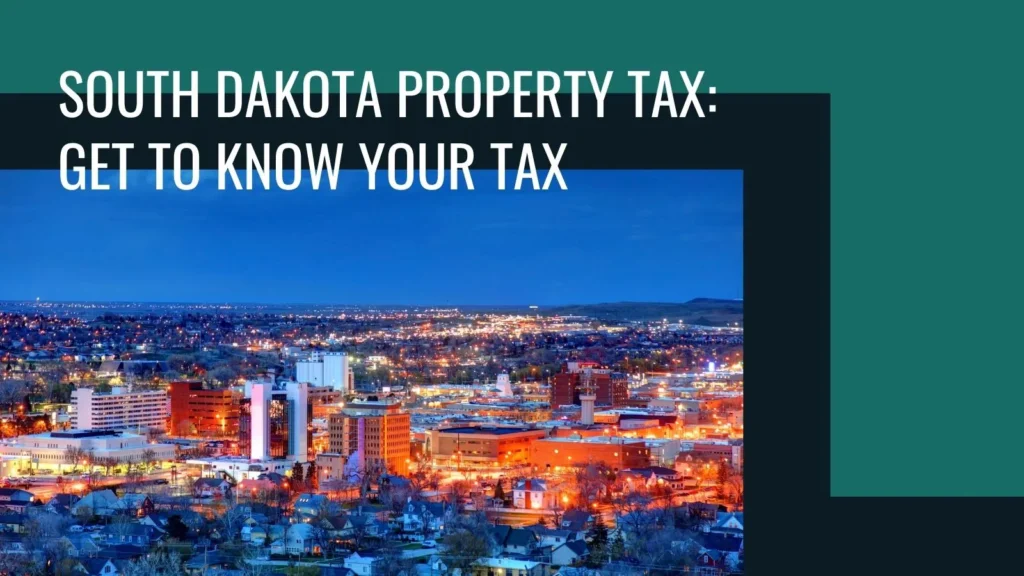Understanding property taxes is essential for homeowners and those looking to buy property in South Dakota. This guide breaks down how property taxes are calculated, compares rates across different counties, and offers practical tips to manage your tax responsibilities effectively.
Introduction
Are you a homeowner or planning to purchase property in South Dakota? Navigating the state’s property tax system can be tricky, especially with varying county rules and rising rates. This guide aims to simplify South Dakota property taxes, providing clear explanations, easy calculation methods, and insights specific to different counties to help you make smart financial choices.
Key Takeaways
- Average Tax Rate: South Dakota’s average effective property tax rate is 1.08%, slightly higher than the national average of 0.99%.
- Assessment Basis: Property taxes are based on the market value of residential properties.
- County Variations: Some counties, like Lincoln and Pennington, have higher tax rates.
- Discounts Available: Homeowners who live in their homes may qualify for lower property tax rates.
- Ongoing Reforms: Lawmakers are working on measures to address rising property taxes in 2024.
- Calculation Guide: Follow our step-by-step instructions to accurately calculate your property taxes.
How Property Taxes Are Calculated
Property taxes in South Dakota are a key source of funding for local governments, including schools, counties, and municipalities. The state itself doesn’t collect or spend any property tax dollars. Here’s how property taxes are calculated:
- Assessing Property Value: Properties are valued based on their full market price, which is what they’re likely to sell for on the open market.
- Determining Taxable Value: The assessed value is adjusted to 85% for tax purposes. For example, a home assessed at $230,000 would have a taxable value of $195,500 ($230,000 × 0.85).
- Setting the Tax Levy: Local authorities decide how much money they need for their budgets. They calculate the tax levy by dividing the required revenue by the total taxable value of all properties in the area. This results in a rate expressed in dollars per thousand dollars of property value.
- Calculating Your Property Tax: The tax rate is applied to your property’s taxable value. For instance, with a tax levy of $10 per thousand dollars, a property valued at $200,000 would incur a tax of $2,000 ($10 × 200).
Property Tax Rates by County
South Dakota Property Tax Rates by County
County Name
Median Home Value: $
Median Annual Property Tax Payment: $
Effective Tax Rate: %
Owner-Occupied Classification
If you live in your home as your main residence, you might qualify for a reduced property tax rate. To get this classification:
- Apply: Submit an application to your County Director of Equalization by March 15.
- Maintain Status: Keep living in the property to continue receiving the discount.
Appealing Your Property Tax
- Initial Discussion: Start by talking to your local Director of Equalization.
- Formal Appeal: If needed, file an appeal with the county’s board of equalization.
- Further Steps: If still unresolved, you can take your case to the Office of Hearing Examiners or even the circuit court.
Property Tax Relief Programs
South Dakota offers relief programs for seniors and individuals with disabilities. Eligible people may get a refund for some of the sales or property taxes they paid last year. To qualify, you must meet certain age, disability, income, and residency requirements. Be sure to apply by July 1 each year.
Legislative Developments
To address rising property values, South Dakota lawmakers have considered ways to limit increases in property taxes. For example, Senate Bill 167 aimed to cap property tax valuation increases at 3% annually for both homeowners and rental properties, but it wasn’t passed.
Stay updated on the latest changes by consulting local county officials or the South Dakota Department of Revenue.
Eligibility for Tax Discounts
- Residency: Live in the property as your main home.
- Application: Apply for the owner-occupied status once.
- Continued Ownership: Keep owning and living in the home to maintain the discount.
Benefits of Understanding Property Taxes
- Lower Rates: Qualifying for owner-occupied status can reduce your taxes.
- Disputing Assessments: Challenging high valuations can lower your tax bill.
- Financial Planning: Accurate tax information helps in budgeting and investments.
- Legislative Changes: Being aware of reforms can help you anticipate future tax rates.
How to Apply for Property Tax Benefits
- Find Your Assessed Value: Get your property’s assessed value from your local tax assessor.
- Know Your Tax Rates: Check the effective tax rate for your county and other local areas.
- Apply for Owner-Occupied Status: If you live in the property, apply for the discount.
- Appeal If Needed: If you think your property is over-assessed, file an appeal.
- Get Professional Help: Consider consulting a tax advisor for personalized assistance.
Things to Keep in Mind
- Annual Assessments: Property values are reassessed each year, so stay informed about changes.
- Exemptions: Look for any exemptions or deductions that might apply to you.
- Local Differences: Tax rates and rules can vary widely between counties.
- Professional Help: Use tax services for accurate assessments and effective appeals.
Frequently Asked Questions (FAQs)
How does South Dakota’s property tax rate compare to the national average?
South Dakota’s average effective property tax rate is 1.08%, which is slightly higher than the national average of 0.99%.
How do I calculate my property taxes in South Dakota?
To calculate your property taxes, determine your property’s assessed value, find out your local tax rates, and apply the rate to your taxable value. Follow the steps outlined in our guide for a detailed process.
Why does Lincoln County have the highest property taxes in South Dakota?
Lincoln County has the highest property taxes primarily because it has the state’s highest median home value of $240,200 and an average effective tax rate of 1.48%.
How do South Dakota’s property taxes compare to North Dakota’s?
South Dakota’s average property tax rate of 1.08% is higher than North Dakota’s 0.94%, making property taxes slightly more burdensome in South Dakota.
How do property taxes in Union County stack up against state and national averages?
Union County has an effective property tax rate of 1.25%, which is slightly above South Dakota’s state average of 1.08% but still offers competitive rates within the state.
Current Property Tax Rates and Trends
In 2024, property taxes in South Dakota remain a significant issue for residents, with noticeable increases over the past decade:
- Average Rate: Approximately 1.08%, higher than the national average.
- Growth Over Time:
- Homes: Nearly 60% increase
- Commercial Properties: About 47% increase
- Agricultural Properties: Around 28% increase
- Tax Revenue Distribution (2023):
- Schools: 56%
- Counties: 27%
- Cities: 13%
- Other Local Entities: Remaining portion
Legislative Actions and Future Plans
A legislative committee is examining the rise in property taxes and proposing reforms for the upcoming session in January 2025. The goal is to create a fair and balanced property tax system that addresses residents’ concerns about high tax burdens.
Factors Influencing Property Taxes
- Market Dynamics: Rising home prices, especially in areas like Sioux Falls and the Black Hills, increase property valuations and, consequently, tax burdens.
- Revenue Caps: Local governments can only raise property tax collections by up to 3% or the rate of inflation each year, along with new growth revenue. This cap helps control annual tax increases.
County-Specific Insights
- Lincoln County: Median property taxes around $3,102.
- Pennington County: Approximately $2,608.
- Minnehaha County: Around $2,594.
These differences reflect local funding needs and property market conditions.
Conclusion
Grasping how South Dakota property taxes work is vital for homeowners and those looking to buy property. With an average effective tax rate of 1.08%, which is higher than the national average, it’s important to stay informed about local rates, eligibility for discounts, and any legislative changes. Utilizing available resources and seeking professional advice can help you manage your property tax obligations effectively and make sound financial decisions.
For detailed calculations and personalized help, consider reaching out to a financial advisor.




 anywhere
anywhere  anytime
anytime